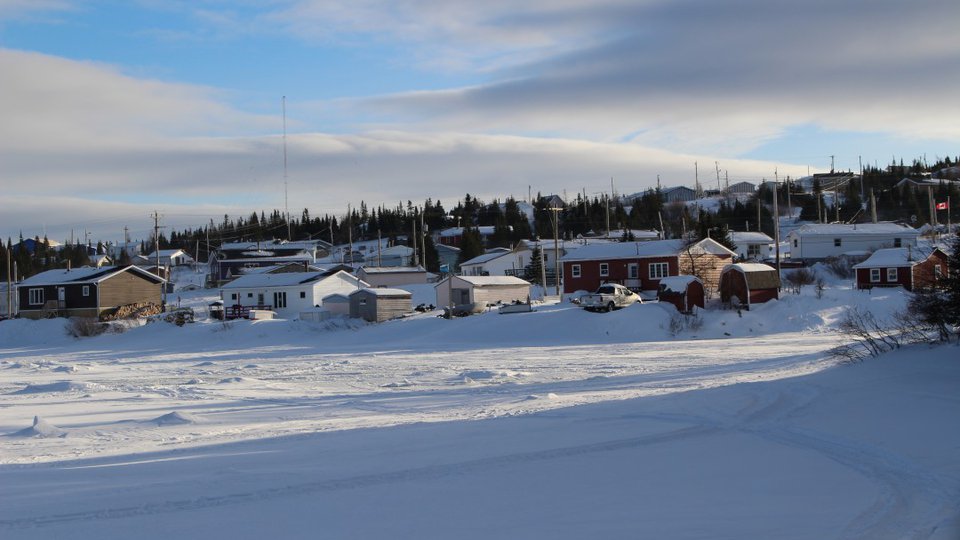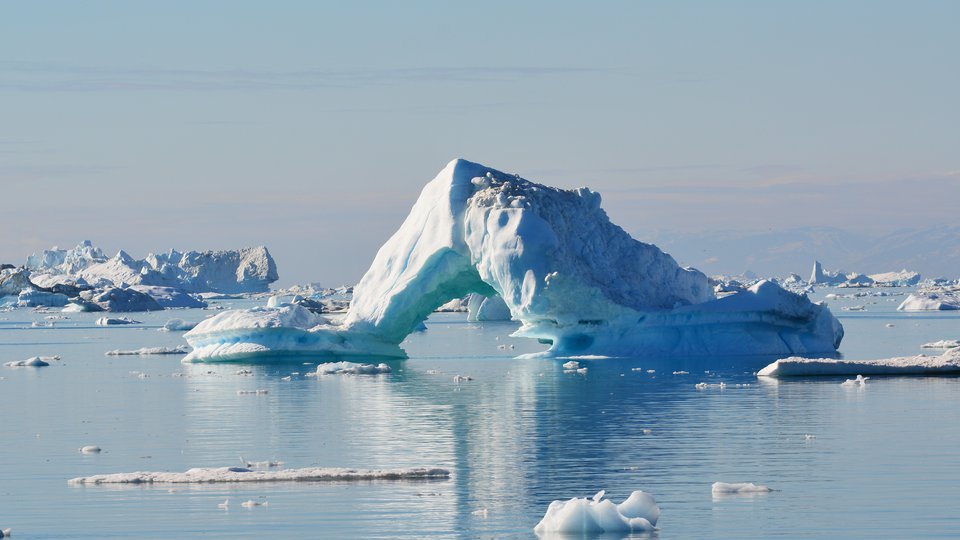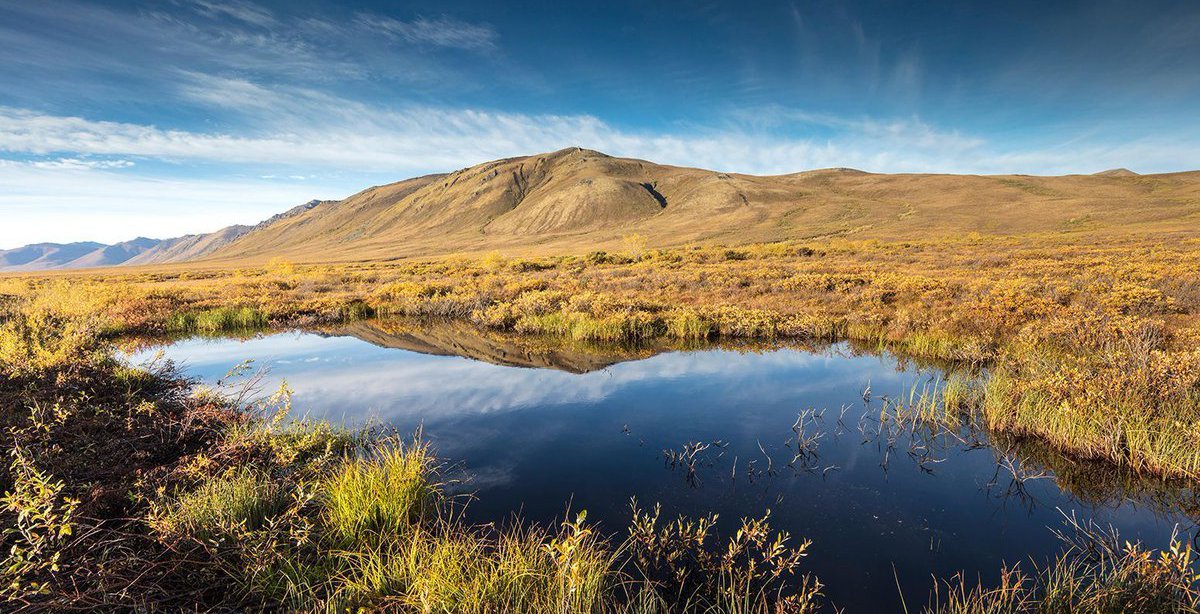
s the climate warms, there is increasing concern around thawing of carbon-rich permafrost across the Arctic. Carbon emissions from this perennially frozen land have the potential to reinforce global warming.
Adding to this risk, the Arctic is also pockmarked by millions of small ponds and lakes, formed as the frozen soil thaws, collapses and fills with melted ice, snow and rain. These lakes accelerate thawing of the surrounding land, ramping up how much carbon the land emits.
In our recent study, published in Nature Communications, we have – for the first time – estimated the global carbon emissions from permafrost thaw beneath and around Arctic lakes.
And our findings suggest this rapid thaw has the potential to double how much permafrost carbon is released this century.
Giant freezer
Permafrost covers around a quarter of the non-glaciated land in the northern hemisphere, including large parts of Siberia, Alaska, northern Canada and the Tibetan plateau.
Permafrost soils lock in old plant and animal remains like a giant freezer. This a carbon-rich combination of roots, leaves and peat that covered the vast tundra-steppe and interspersed wetlands of the last ice age. It also includes mammoths and other iconic animals of the time.
As its name suggests, permafrost is permanently frozen, However, during the short summer season, the uppermost part of the soil – known as the “active layer” – briefly thaws. This layer is, perhaps, just a few tens of centimetres deep.
However, a warming climate puts an increasing amount of permafrost at risk of thawing. And it is not only contending with the steady rise in global average temperatures, but also “Arctic amplification” – the rapid warming in the Earth’s northernmost latitudes in response to melting sea ice and declining snow cover.
This warming leads to a deepening of the active layer and thawing of previously frozen plant remains – containing old carbon that was deposited and frozen over the course of several thousand of years. Once thawed, microbes set about consuming the plant and animal remains, releasing CO2 in well-drained upland locations.
A deepening active layer also mobilises nutrients that stimulate growth of new plants. The CO2 uptake of these new plants will likely outweigh the losses of old permafrost carbon during this century. However, beyond 2100, deeper thaw of the active layer will become more important, leading to large net losses of soil carbon for at least the next two centuries.
Once soil carbon emissions exceed plant uptake, this self-reinforcing process – known as the “permafrost-carbon feedback” – will lead to further climate warming and make the monitoring of remote permafrost regions even more important.
However, gradual thaw alone does not tell the entire story.
Thermokarst lakes
Among permafrost scientists and people living on permafrost, rapid thaw processes are a well-known phenomenon, but their impact on carbon emissions has historically not been quantified.
Rapid thaw of permafrost occurs when large volumes of ground-ice melt, the ground subsides and the resulting depression fills with meltwater, rain and snow. This process is known as “thermokarst”.
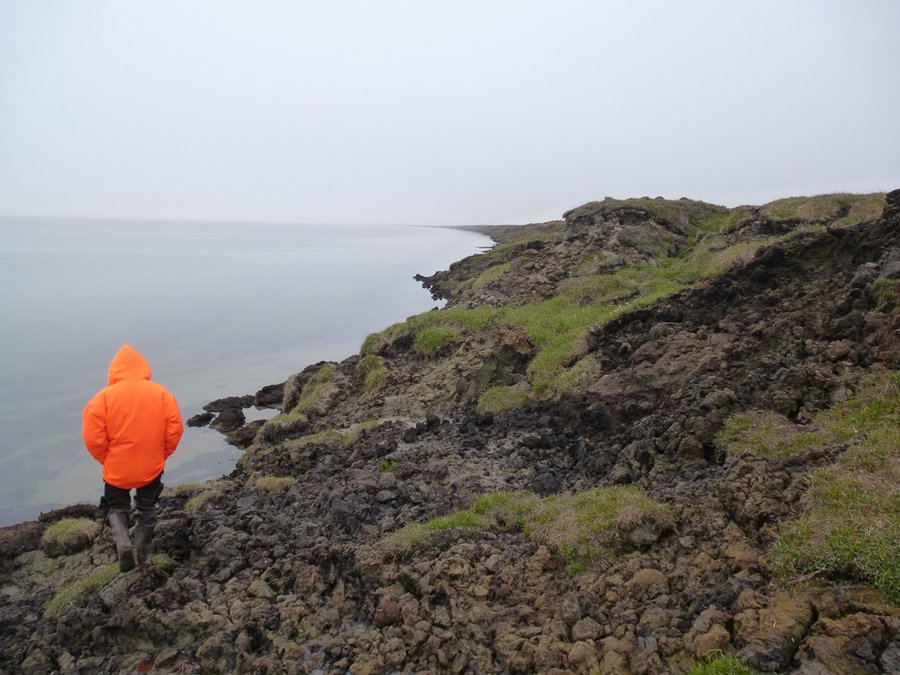
Eroding permafrost along the shoreline of an expanding thermokarst lake in northern Alaska. Credit: I. Nitze
In water-logged and impermeable permafrost soils, the small ponds formed within these depressions may grow rapidly within a few years or decades to form larger lakes. As water has a greater capacity for holding heat than land does, these ponds and lakes take in summer warmth and become efficient thawing machines of the surrounding and underlying permafrost. As the graphic below illustrates, this eats away frozen soils and its organic remains.

Schematic of gradual, top-down thaw in upland permafrost and abrupt thaw beneath lakes. Source: Walter Anthony et al. (2018)
The carbon that has accumulated for tens of thousands of years in the soil is, thus, turned into into liquid, smelly mud in oxygen-free lake bottoms, providing a feast for organic carbon-munching microbes. The process itself is irreversible.
In its early stages, permafrost thaw below and around ponds occurs only during summer and autumn, when the ponds are ice-free. During typical cold Arctic winters, land and lakes freeze over and lake-ice can grow to one or two meters deep, freezing the entire water body of shallow ponds.
However, this seasonal pattern is seriously affected by warming of the Arctic, where lake ice becomes thinner and ice cover duration is shortening dramatically. Ponds that no longer freeze to the bottom are known as “thermokarst lakes”. Thawing conditions on the lake bottom now prevails throughout the entire year, even during winter.
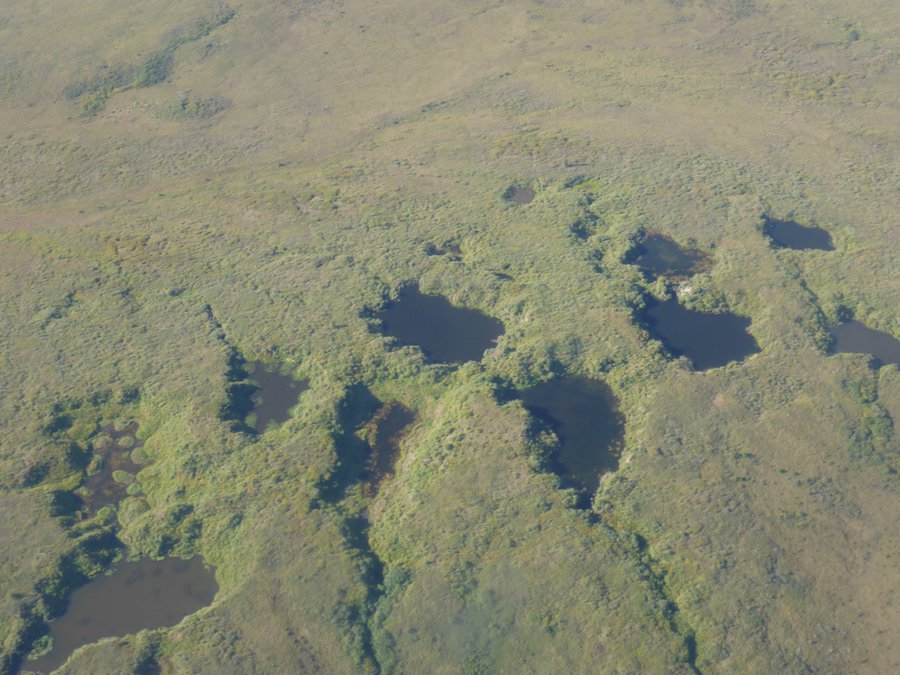
Quickly growing early-stage thermokarst ponds in ice-rich permafrost on the Baldwin peninsula in north-western Alaska. Credit: J. Lenz
Microbes and methane
In our study, we identified thermokarst lakes where sediments had thawed as much as 15 metres deep within only half a century. Remember, this is compared to a typical thaw in tundra soils of the order of tens of centimetres.
Thriving in above-freezing temperatures, microbes start to rework old previously frozen and well-preserved plant remains and produce CO2 and – the even more potent greenhouse gas – methane. Rising up from the bottom of thermokarst lakes, methane bubbles trapped in lake ice are a sign of year-round methane production and emissions.
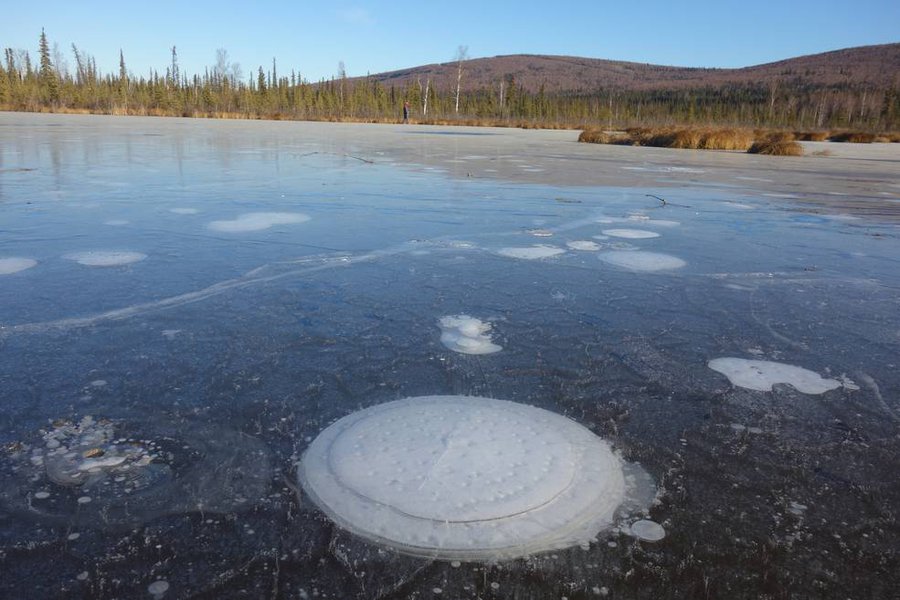
Captured methane bubbles in lake-ice in central Alaska. Credit: K. Walter Anthony
It is worth noting that lakes will not necessarily just keep on growing. The landscape today is already densely carpeted with lakes, rivers, gullies and other topographic gradients so that growing lakes may also easily drain, merge or eventually dry out.
Similarly, new permafrost can form on the former lake bottom and new biomass can grow and get buried in wet and boggy conditions, leading to an uptake of of carbon from the atmosphere.
However, the carbon release from expanding lakes strongly outweighs carbon uptake from lake loss over decadal – and, thus, human-relevant – timescales.
Global impact
So, what do thermokarst lakes mean for carbon emissions on global scales?
Lakes in permafrost regions come in bunches and occur anywhere with flat ground in the northern high latitudes. Many of them are glacial lakes, carved by glacial ice into bedrock basins where there is not much leeway for expansion by thawing.
However, millions of lakes across the ice-rich permafrost deposits of the Arctic lowlands are affected by rapid thermokarst development. Owing to their vast abundance and comparably small size, monitoring their dynamics and modelling their influence on the climate has been a major challenge.
For the first time – and in a large collaborative effort of teams from Alaska and Germany – we have quantified the impact of rapid thaw on global carbon emissions. Using a combination of field observations in Alaska and Siberia, remote sensing of lake dynamics and global-scale permafrost, and climate model simulations, we have drawn a more complete picture of how these lakes could affect greenhouse gas release and its impact on the climate.
For example, time series of satellite data collected over large parts of Alaska helped us to find and understand patterns of lake changes over large regions. While our model simulations of future permafrost degradation account for thermokarst lake formation and its dynamics in a warming world.
Globally important
Our results show that rapid thaw matters.
Not only do our findings reveal that rapid thaw will have a strong impact on carbon emissions from permafrost this century, in a high warming, business-as-usual scenario (“RCP8.5”), it more than doubles the previously estimated carbon release from gradual thaw alone.
Even under moderate-emission scenarios with a reduction of human-caused carbon emissions (known as “RCP4.5”), rapid thaw will play a major role in permafrost-related carbon cycling, outpacing emissions from gradual thaw.
The majority of the carbon released through rapid thaw would be in the form of methane. Taking these emissions into account, the permafrost-carbon feedback by the end of the century could become as strong as the second strongest human-caused source of greenhouse gases today – land use change.
Our findings show that the lack of understanding of Arctic lake dynamics and the neglect of implementing these aspects into global climate models can result in strongly underestimating greenhouse gas emissions from degrading permafrost landscapes.
Formation and expansion of thermokarst lakes will accelerate the release of permafrost carbon. This means that the permafrost-carbon feedback will be globally important within several decades from now as opposed to centuries.
Dr Ingmar Nitze is a postdoctoral researcher at the Alfred Wegener Institute Helmholtz Centre for Polar and Marine Research (AWI); Dr Guido Grosse is head of the Permafrost Research Section at AWI and professor of permafrost in the Earth system at the University of Potsdam; Dr Thomas Schneider von Deimling is a senior scientist at AWI; and Dr Katey Walter Anthony is an aquatic ecosystem ecologist at the University of Alaska Fairbanks.
Our research was supported by NASA’s Arctic Boreal Vulnerability Experiment (“ABoVE”) programme, the European Research Council “PETA-CARB” project, the European Space Agency’s “GlobPermafrost” initiative, the German government’s “PermaRisk” project, and the National Science Foundation ARCSS programme.
This article was originally published by Carbon Brief.

